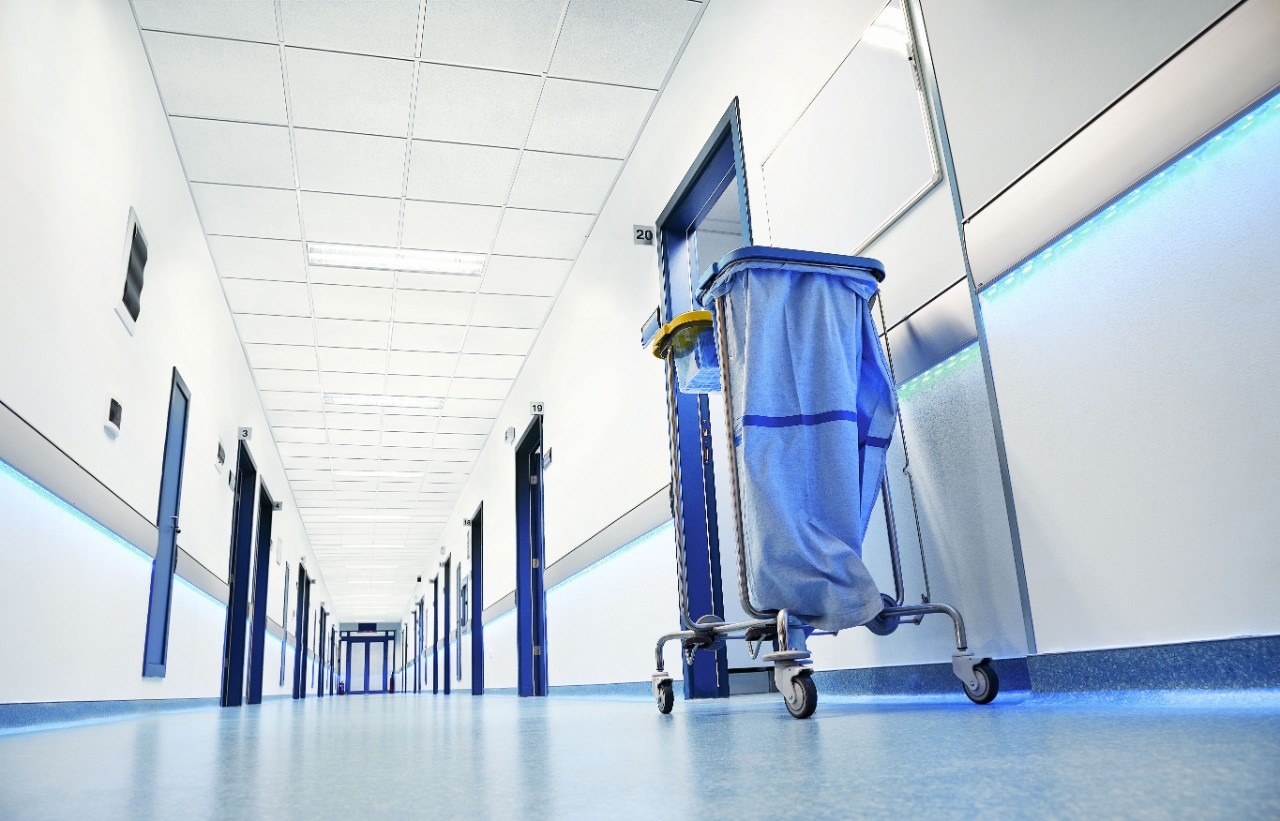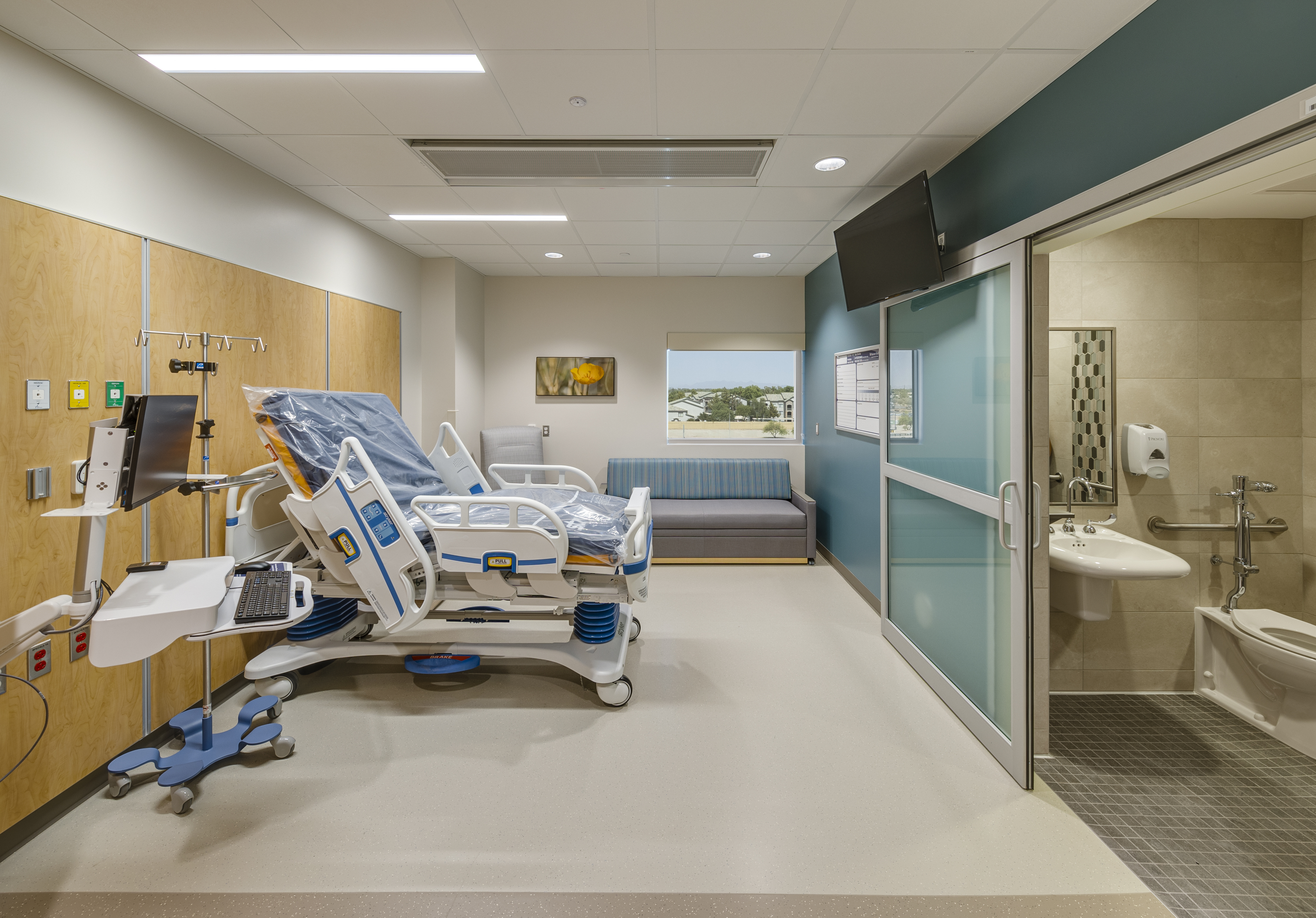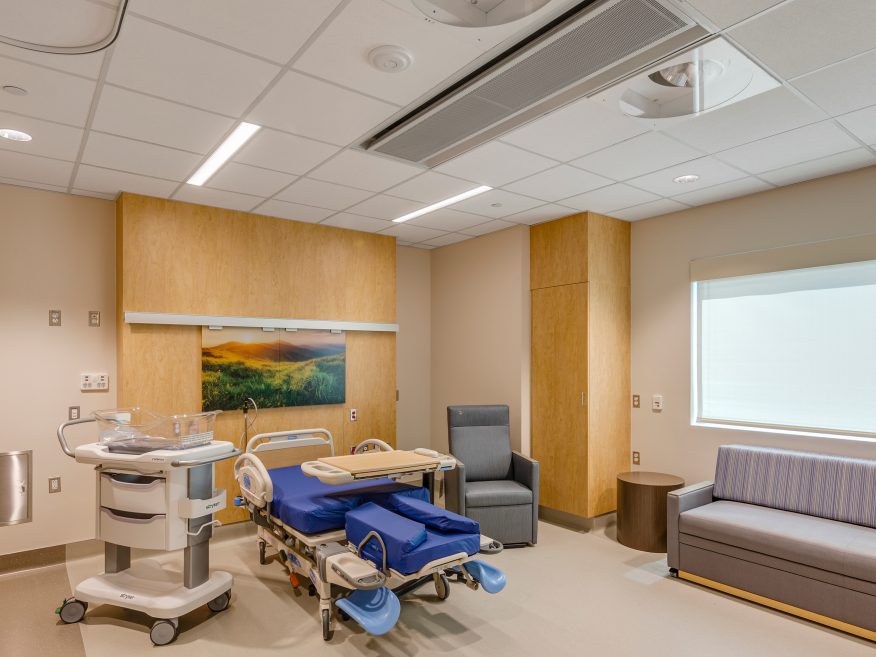Sign In
You're All Set
loginSuccess
You have been logged out
You have been logged out due to inactivity
Forgot Password
Please enter the email address you used to create the account. We'll send you a link that lets you create a new password.
You're All Set
forgotPassSuccess
Reset Password
You're All Set
resetPassSuccess
Change Password
You're All Set
changePassSuccess
Prioritizing Wellness in Healthcare Design
When it comes to designing healthcare environments, there are many unique challenges and considerations that must be addressed.
Patients and caregivers require private spaces to discuss medical information and cleanliness standards need to be met or exceeded. There is also intricate medical equipment that must be accounted for, along with the intensive regulations for laboratory cleanroom spaces. With all of these factors in mind, the design imperatives for healthcare environments are many.
Beyond all others, putting patient healing at the center of the process should be the guiding principle in healthcare design. As you specify products to meet the demands of healthcare environments, USG’s wide portfolio of products can provide high-performance options for every space.
There are several key design considerations within the healthcare environment, including acoustics, safety & cleanliness, and color & lighting.
Acoustics

Maintaining a tranquil environment through noise control is one facet of healthcare design that can be managed with proper acoustics.
Guidelines from HIPAA (Health Insurance Portability and Accountability Act), HCAHPS (Hospital Consumer Assessment of Healthcare Provider Systems), and the FGI (Facilities Guidelines Institute for Healthcare) provide recommendations for privacy and noise requirements within the healthcare environment.
Excessive noise can impact patients in many ways, including annoyance, sleep disruption, decreased oxygen saturation, and elevated blood pressure. Each of these can lead to decreased wound healing rates and a higher incidence of rehospitalization. High noise levels can also affect hospital staff, causing fatigue, emotional exhaustion, perceived work pressure, stress, and annoyance.
When designing healthcare spaces, it’s crucial to select ceiling panels that offer balanced acoustics, combining sound absorption (NRC) and sound blocking (CAC) for improved privacy. This is essential to create a healing environment for patients, reduce stress for guests, and increase workplace productivity for staff.
Acoustical control can also apply to flooring, where footsteps and other sound transmission can cause a disruption to occupants between floors. The use of flooring products within the range of USG’s sound attenuation mats can help improve the impact insulation class (IIC) and sound transmission class (STC) ratings of a variety of subfloors. These products coupled with USG STRUCTO-CRETE Brand® Structural Panels can create an effective system to reduce impact sound.
Safety & Cleanliness

Healthcare environments must hold safety and hygiene to the highest standard. Airborne pathogens can easily transmit through the air and linger on surfaces for weeks. To ensure safety for all, the CDC’s “Guideline for Disinfection and Sterilization in Healthcare Facilities” outlines specific recommendations for disinfecting and sterilizing healthcare environments.
Therefore, it’s essential to choose ceiling panels that meet standards for washability, mold resistance, microbial resistance, fire safety, and seismic requirements. For rooms that require ISO 14644 cleanroom environments, USG offers ceiling panels with fully encapsulated edges that have been third-party tested by either Acorn Industries or UL Environment to meet ISO 14644 standards.
Healthcare buildings have multiple high-traffic areas where people and objects pass through. Inherently, these areas are more prone to scraping and bumping, which leads to more serious damage. If not properly maintained, healthcare facilities stand to face underperforming surfaces, significant maintenance costs, and potential life safety issues. This is where USG’s abuse- and impact-resistant wallboard products can make a difference rather than ongoing expenses to maintain and repair standard drywall partitions.
Safety isn’t strictly reserved for the interior of a healthcare facility, either. USG Securock® Brand Roof Boards can help ensure that the occupants and contents of high-sensitivity buildings found in healthcare remain safe from the elements. Without durability and protection on the roof, the entire structure is more susceptible to impacts, hail, fire, and wind damage throughout the lifecycle of the building, making it extremely important to future-proof your roof.
Color & Lighting

Colors, shapes, and light all play a vital role in creating a holistic environment that facilitates healing in a calm and encouraging space.
Patients frequent hospitals for a variety of needs and experience a varying range of emotions. Whether designing a calm, soothing waiting room for psychiatry patients or creating a fun, playful pediatric care center, colors can influence emotions and moods. Blues, browns, and natural colors can help soothe patients, while green signifies safety, and red can be overstimulating in certain areas.
Creative shapes, patterns, and colorful designs encourage and inspire while providing a visual quest for patients to help ease their state of mind. USG offers Renditions™ panels, which come available in endless shapes, patterns, and custom design options that don’t sacrifice acoustics. For more non-traditional open plenum reception and cafeteria areas, USG Halcyon™ Canopies offer colorful shapes and designs that can be installed in an endless array of patterns to help reduce and control noise.
Colors can also aid in wayfinding when used appropriately in signage. The ISO has color-coding standards (ISO 3864-1) for safety colors, signs, and graphics are specifically designed to reduce accidents and injuries in public facilities. Furthermore, research has shown that elderly patients benefit from rooms with higher contrast of ceilings, walls, and floors, as the change in contrast helps patients with deteriorating vision.
Light exposure is essential to human life and can also impact the body’s ability to heal. Studies of circadian rhythms demonstrate that the color spectrum of light directly influences human biological systems and health outcomes1. Knowing this, the use of ceiling panels with high light reflective (LR) values can help diffuse and increase the light within patient rooms to promote more holistic healing.
The USG Solution
Designing for healthcare environments requires careful consideration of many unique challenges and considerations, including patient privacy, cleanliness standards, and intricate medical equipment. However, the most critical design imperative for healthcare spaces is prioritizing patient healing.
With USG's range of solutions, including acoustical ceiling panels, sound attenuation flooring products, and abuse- and impact-resistant wallboard, healthcare facilities can more easily meet their requirements with the added benefit of specifying from a single manufacturer.
Learn more about USG solutions for healthcare environments here.




